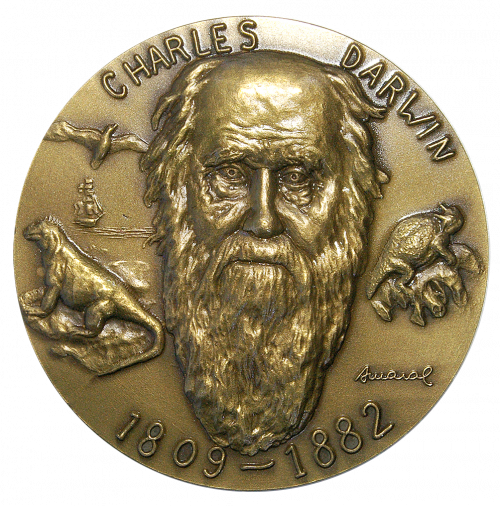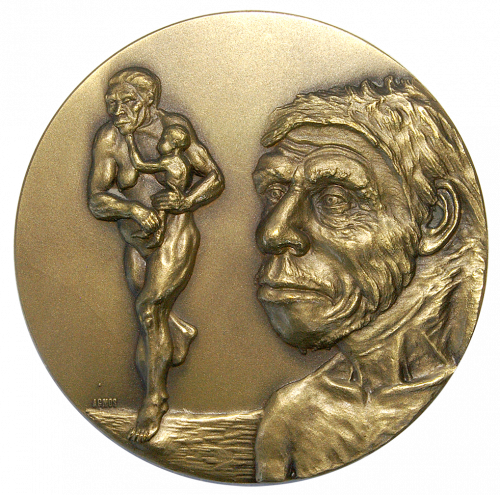M054
Bronze, UNC
80 mm (3.5”), 270 grams
HISTORY: Apparently designed by artist Jim Amaral (1933– ), an American born and educated artist now living in Columbia, South America, this bronze medal is a bit of a mystery. There is no date, so it has been difficult tracking down its origin and purpose. Amaral’s father was Portuguese and his mother was American of Italian descent. He earned his BA from Stanford University in California and later married his Colombian wife. He moved around quite often as a student, an artist, and a teacher—California, New York, Michigan, Washington, North Carolina, Bogotá, Santa Fe, and Paris—and may have created this work during his New Mexico years in the 1990s when he was involved in the creation of bronze sculptures at the Shidoni Foundry in Santa Fe.
REVERSE: An interesting scene is displayed in deep relief of a hominid family. A male face profile in the foreground appears to be looking intently into the distance while his woman companion, cradling a child, runs furtively into the future. To the left of the woman’s foot is the name “AGMOS” in small print. Agmos-Medalhas, LDA, a foundry located in Porto, Portugal, produced this medal. It is possible that Amaral’s father introduced him to this design opportunity, which otherwise seems outside of Amaral’s artistic comfort zone.
OBVERSE: This famous portrait of Charles Robert Darwin (1809‒1882), an English naturalist, a collector, a scientist, and an author, has been cast in bronze on this large medal. Darwin’s theories of the evolution of life upended the way people thought, changing the mindset of civilization to this day.
Darwin’s five-year voyage aboard the HMS Beagle (shown to the left of his portrait), a brig-sloop of the Royal Navy, landed him at the Galapagos Islands. He discovered animals unique only to the islands, including the frigatebird and land iguana (above and below the Beagle) and marine iguana (to the right). “CHARLES DARWIN” and “1809–1882” encircle his portrait top and bottom. Amaral’s signature is clearly displayed at four o’clock.


